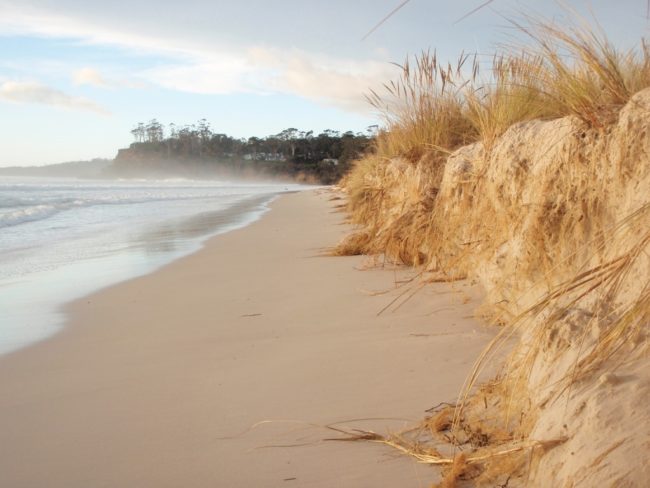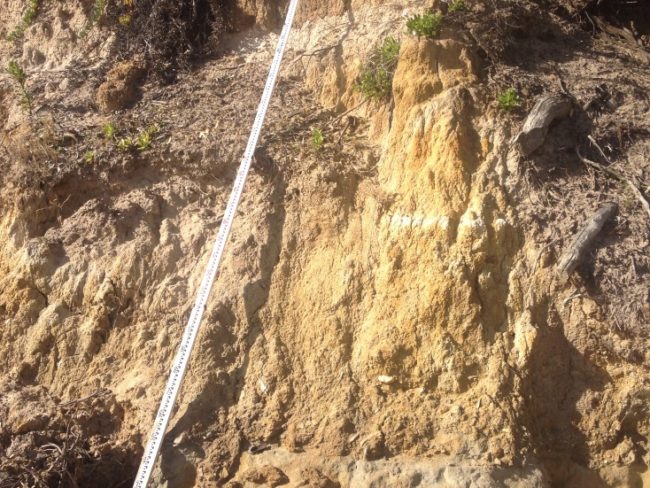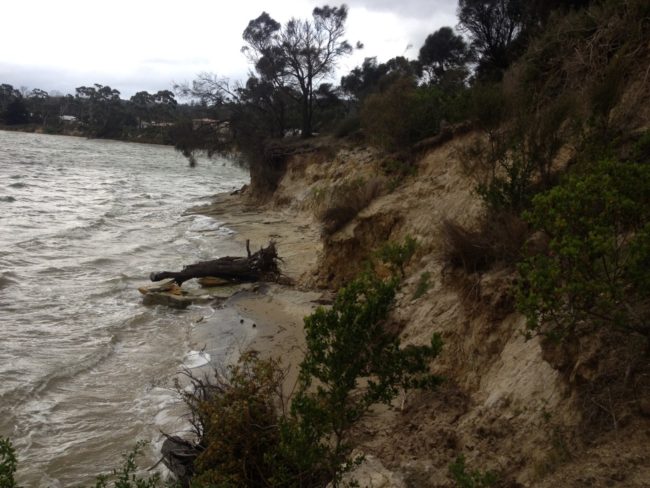I’ve produced a PDF flowchart to help people navigate through the Tasmanian Coastal Erosion Hazard Code.
The Code aims to mitigate the risk to life and property due to coastal erosion, recession and wave run-up under current and future sea level change. It is one of many in the 2015 Interim Planning Scheme used by all Tasmanian Local Councils. See the list of Codes including the ones for which I offer professional services.
The Code applies to development applications (like new houses) for waterfront properties which are in Coastal Erosion Hazard bands. The bands denote susceptibility of a coast to erosion, and are coloured red (high erosion hazard), orange (medium) or yellow (low). A few coastal areas are coloured green (“Coastal erosion investigation area”) where the level of erosion susceptibility is uncertain and requires further investigation.
Read about how bands are defined and mapped around Tasmania’s coastline in the very comprehensive 2013 coastal erosion report (PDF document) by Chris Sharples, Hannah Walford and Luke Roberts, and issued by the Tasmanian Department of Premier and Cabinet (DPAC).
If you are thinking about buying waterfront land and/or building a house on it, you are strongly advised to check its erosion hazard banding on the state government website www.thelist.tas.gov .au
On the home page, click “LISTmap”; double click on the location of interest and continue to double click (or use the mouse wheel) to zoom in; click “Layers” at top right, then click “Add Layer +”. In the menu box that opens, scroll down to “Coasts and Oceans and Estuaries”, click on “Coastal Vulnerability” and click on the circular green + icon for “Coastal Erosion Hazard Bands”. You may need to zoom in further until the bands are visible. Drag the menu box out of the way (or close it). At top right of the screen, click on the tiny arrow in the “Coastal Erosion Hazard Bands” box to see the Legend and change the transparency.
Some development applications are exempt from the Code.
If the Code applies to an application, your Local Council will require “more information” before approving or rejecting it.
The flowchart is designed to help everyone understand the situations in which the Code applies, and what Local Councils require in order to consider a development application in a Coastal Erosion Hazard band. Generally speaking, some form of reporting by a “Suitably Qualified Person” is needed. (The qualifications or experience of this person are not defined, but I regard myself as one) Site investigations – of a mainly geotechnical nature – may be required before a report can be prepared.
Local Council may approve or reject a report (and your development application). If approved, complying with the requirements of the Code may add costs to your proposed development.
If you think your proposed development might be in a Coastal Erosion Hazard band, you should get its accuracy checked in the field by a suitably qualified person. This is because on the www.thelist.tas.gov.au website, DPAC states “…Hazard bands as depicted in this map may not accurately represent the existence or otherwise of hazards in the mapped area. Independent expert advice should be sought if action is to be taken that may be impacted by the existence or otherwise of hazards in the mapped area.”
Checking the accuracy of a Coastal Erosion Hazard band is done primarily by site inspection to review the topography and geology of the property and environs, and perhaps undertaking subsurface investigations on it.
I’ve heard that some real estate agents are unaware of the Coastal Erosion Hazard bands, and the Code, so be alert.
Other Codes may potentially affect your development application. These include but may not be restricted to the On-site Wastewater Management Code, the Landslide Code, and the Acid Sulphate Soils Code. I provide advice on these three Codes. See my May 2016 news posts about them, and the accompanying flowcharts I’ve produced for them.



Leave a Reply